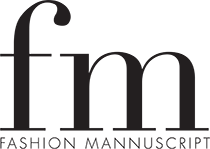Why green is the hottest color in lingerie
The intimate apparel industry was worth $19 billion in 2019 (according to IBIS), and it’s projected to keep growing. Curve, one of the leading trade show entities for lingerie and intimates, can attest to that growth. Raphael Camp, CEO of Eurovet Americas — which oversees the Curve and Interfiliere trade shows — has noticed that the industry has matured beyond simple underwear.
Camp moved to New York City from France seven years ago. He studied political science in France and business in the U.S., and his interest in marketing ledhimtoworkinretailbeforebeginning his current role at Eurovet Americas. He wanted to work between brands and retailers, which is partially why he has done so much to elevate Curve.
“I’m really interested in content and marketing,” he said, explaining some of the ideas he has implemented at Curve New York. The show now has a greater focus on industry trends and ways to help small business owners compete in the intimate apparel industry. The show also tries to be accessible to young and upstart designers.”
At the end of February, Curve had its first Los Angeles show. In contrast to the New York format, Curve Los Angeles was salon showroom-style, with smaller spaces and a more intimate (if you’ll excuse the joke) atmosphere. Again, Camp said, the focus of the show was on networking and content.
“We’re building out the lingerie community to the West Coast,” Camp said, although the diversity of vendors at Curve New York made it clear that Californian vendors are also making the trek to appear at the traditional show.
The topic that Curve seemed to address the most this year, though, is sustainability.
“I’m happy to talk about sustainability and retail, too, because that’s what we address at Curve,” he said. “We have small business owners in a difficult retail environment, where everyone is threatened by e-commerce and big dot- com guys. Storytelling, such as being able to highlight feel-good aspects of our brands, is very important to our retailers as this is one key ways that they differentiate themselves and keep brick and mortar vital.”
Curve and its affiliate show Interfilière have various events that focus on the sustainability since it has become so popular. The discussion circulates among retailers, vendors and brands, who are each targeting an element of the apparel lifecycle to make it more sustainable. Some, for example, are thinking about plastic in packaging, while others are thinking about how they can select environmentally-responsible suppliers.
“At the panel, it was interesting because everyone was giving their own approach to sustainability and sharing about what they’re doing in the industry,” Camp said, specifically referencing one of the events at Curve New York.
Camp was quick to point out that many brands at Curve have been making lingerie with sustainability in mind for years. Susan Beischel of Skin is one example; the brand has been focused on minimizing packaging and waste since its inception in 2003.
“It’s certainly something that we need to talk about,” Camp said. “But some people have been doing this for many years and maybe not communicating about it. So the focus has already been there. Maybe now it’s more mainstream.”
The shift isn’t just occurring in intimate apparel, though, and Camp noted that a number of factors are pushing the industry toward green-thinking.
“In the fashion industry, probably because of very strong leaders — Stella McCartney, Mara Hoffman, Eileen Fisher — they’ve been pushing the whole industry for a while,” he said. “I think the rest of the industry is following. Also, the consumers are pushing for that. The Generation Z consumers are loud and vocal. They have deep concern for the environment.”
He noted that, according to a recent Nielsen report, 72% of U.S. consumers from Generation Z prefer to buy from sustainably-conscious brands.
Camp also argued that sustainability means different things to different people. Reducing waste, reusing fabrics and recycling materials are all part of it, but it also relates to corporate ethics and labor.
“Sustainability is also something that lasts in the long term,” he said. “The craftsmanship … that’s sustainable too.”
As Curve continues to expand, Camp acknowledges that there is more driving it than just environmental concerns.
“I think the main focus of the industry is delivering the right product that fits the consumer,” he said. “If a trend is about comfort, then a manufacturer is going to provide comfortable products.”
Following that philosophy are a number of trends besides sustainability, including inclusivity and athleisure.
“The future of the lingerie industry will focus on growth that is positive and empowering to a diverse customer base,” Camp continued. “The market is also shifting towards athletic and health-focused consumers. Sports bras and hybrid designs are growing in a variety of retail environments. The trend now is to design dynamic pieces that could be worn from the bedroom to the boardroom. Ultimately, this industry is growing as lingerie becomes a more visible and fashion-driven wardrobe staple. Brands that win will be those that adopt fabrics and designs that are eco-friendly, durable, versatile and that feel good to wear from the inside out.”
Unlike other sectors of fashion, intimate apparel hasn’t had much trouble bringing vendors and buyers to shows.
“Lingerie is very niche, so it doesn’t face the same problems as other areas of fashion — but we’re very mindful about how the market is evolving,” Camp added.
With the luxury of being a part of a close-knit community, Camp can focus his energy on the urgency for sustainability that runs through many of today’s fashion leaders.
“I couldn’t be the right person to evaluate if the brands are doing enough sustainable initiatives — it’s probably not enough,” Camp said. “But I’m under the impression that they are all taking the right direction.”








